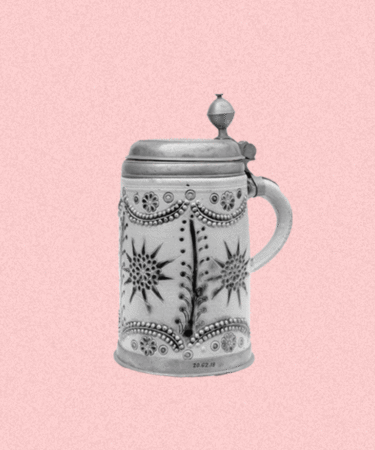History is rife with tales of drunken emperors and inebriated kings, whose lust for power was equaled only by their passion for booze. But could any of these debaucherous tyrants actually claim their lushed-up treachery did any good? According to the “Legend of the Master Draught,” a religious tyrant’s refusal of the drink and another ruler’s impressive guzzling skills eventually saved an entire German town.
The story begins in 1631, in the middle of the Thirty Years’ War, a religious conflict in central Europe that was one of the longest and most brutal in history. That year, Johann Tserclaes, Count of Tilly and commander of the Catholic League in Germany, occupied the Protestant town of Rothenburg ob der Tauber, threatening to burn the village to the ground. In either a desperate attempt to bribe Tilly, or a cunning plan to get him really, really drunk, the townsfolk offered Tilly a tankard of their best Franconian wine. Holding close to a gallon of wine, the tankard was offered in hopes it might change his spirit.
As tyrants are wont to do, Tilly turned the offer on the townspeople, challenging them to instead drink the entire draught in one go, promising to spare them if one of their own succeeded. The stakes were high: Tilly threatened death to anyone who failed, right on the spot.
Stepping up to the challenge was Georg Nusch, Rothenburg’s Bürgermeister (a German word meaning “master of the people,” roughly translating to “mayor”). Nusch successfully quaffed the entire contents of the goblet in one go. Count Tilly, true to his word, left Nusch and all of Rothenburg unharmed, cementing Nusch’s status as the town’s hero.
Luckily, Nusch’s truly legendary chugging skills were not lost to the sands of time — in fact, they are celebrated to this very day. An 1881 play based on the tale is performed during the annual Master Draught Festival in late May or early June, when townsfolk dressed in traditional attire reenact the amazing feat.
For history buffs looking for a daily dose of the legend, a mini-reenactment takes place several times a day on the facade of the town’s 17th-century Ratstrinkstube clock tower. Between the hours of 10 a.m. and 10 p.m., two windows open to reveal figurines representing Tilly and Nusch. While the clock chimes, Nusch lifts a glass to his lips, a reminder of the town’s most venerable legend.
